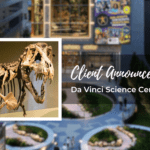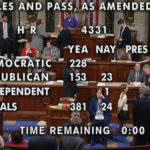For nonprofit organizations, there is perhaps no more exciting, emotional and nerve-wracking time than the transition from start-up mode to full flight. This is when an organization shifts away from the largely personality-driven stage that is fueled by the founder’s blood, sweat and tears and moves into a more formal stage. The acknowledgement that a nonprofit—its mission, impact and potential legacy—is much bigger than any one individual presents a significant opportunity for transformation.
But in most cases, this doesn’t just happen. It’s not easy to admit that you are, in fact, dispensable. It takes a founder who thoughtfully considers the situation, assesses his/her role and then gracefully enables the organization to fully embrace a new beginning. Gathering the courage and humility to step aside, a founder can make the necessary space for a new leader to succeed with the collective support of a fully empowered and engaged Board.
For one inspiring example of how a founder is effectively navigating this tricky terrain, see the TedxTalk from Carrie Maria, founder of Monster Milers, a shelter dog running club and rescue organization.
http://www.ustream.tv/recorded/101674090
Carrie realized that for Monster Milers to thrive, it needed a more robust organization and a layered governance structure, which would require some careful planning. So in September of 2016, Monster Milers engaged Schultz & Williams to assist with governance planning. We were pleased to guide them through this six-month process of “conscious uncoupling”—a purposeful approach to positioning Monster Milers to flourish with redefined leadership roles.
Through this process, a small volunteer task force worked with Carrie to formalize the Board structure by updating its by-laws, increasing the number of Board members from two to nine and adding clear role descriptions for the Board’s officers and members. The task force focused on two important thoughts: (1) we want to do this transition right, taking the necessary time to think things through, and (2) we want to ensure that the members of the Board are capable and committed to the mission.
Carrie arrived at this hard decision through self-reflection and a realistic acknowledgement of her limits. However, for many founders, knowing when to let go is not instinctual. Nonprofits often find themselves trying to keep things together, meet commitments and maintain the status quo. But they must raise this question: “Is the status quo good enough?” Determining the answer to that question can lead the founder and the Board to a shared understanding, ultimately positioning the organization to unleash its full potential.



